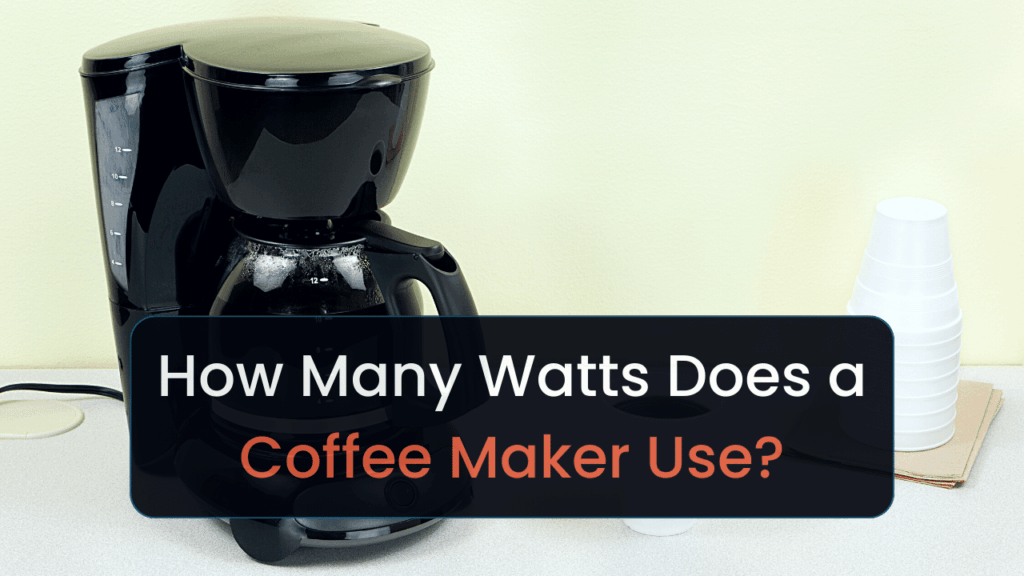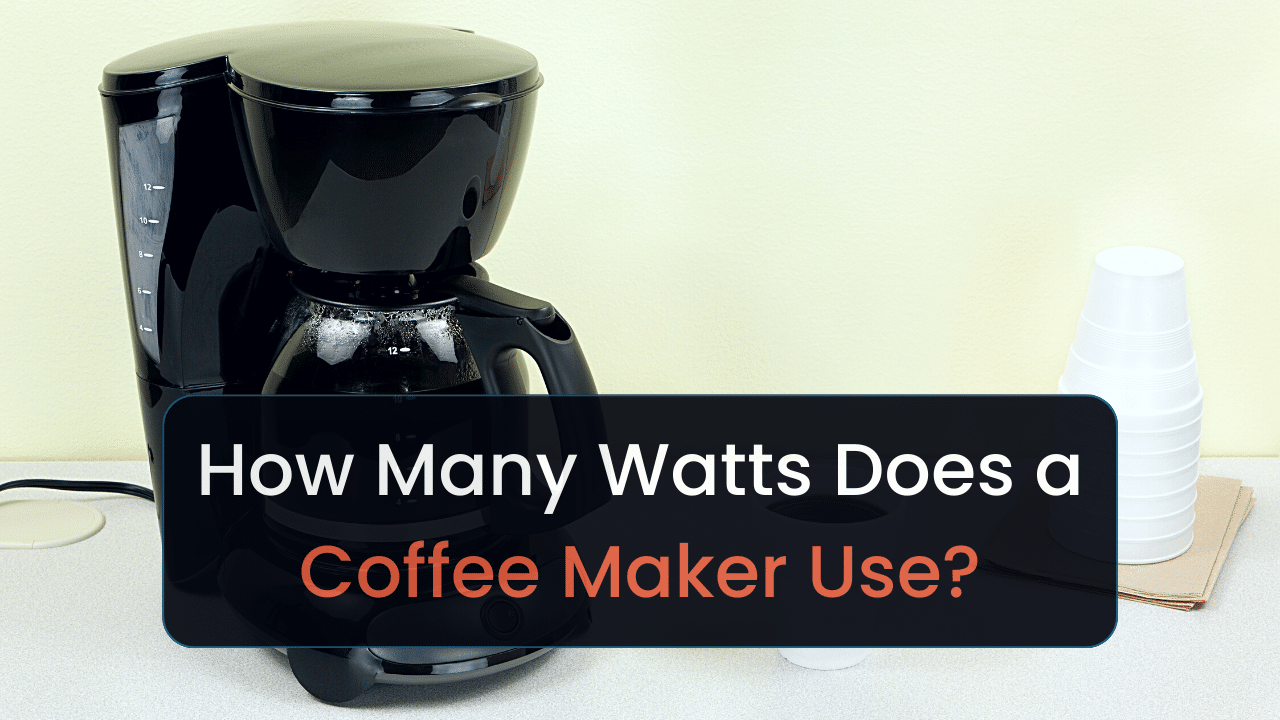
Brewing Up the Truth: Decoding How Many Watts Does a Coffee Machine Use?
The aroma of freshly brewed coffee is a morning ritual for millions. But amidst the comforting scent and the promise of a caffeine boost, have you ever paused to consider the energy footprint of your beloved coffee machine? Specifically, have you ever wondered, “how many watts does a coffee machine use?” This seemingly simple question unlocks a deeper understanding of energy consumption, household costs, and the environmental impact of our daily habits. This article delves into the wattage of coffee machines, exploring the factors that influence energy usage, and offering practical tips to minimize your machine’s energy footprint.
The Wattage Whodunit: Unveiling the Energy Consumption of Coffee Machines
Understanding the term “watt” is the first step in deciphering the energy consumption of your coffee machine. A watt is a unit of power, representing the rate at which electrical energy is used. The higher the wattage, the more electricity the appliance consumes per hour of operation. This is crucial when considering “how many watts does a coffee machine use,” as this directly impacts your electricity bill and overall energy usage.
Coffee machines, like any electrical appliance, come with a wattage rating, usually found on a sticker on the back or bottom of the machine. This rating indicates the maximum power the machine will draw during operation. However, the actual power consumption can fluctuate depending on the machine’s function. For instance, the initial heating phase typically requires the most power, while maintaining the temperature might consume less.
Factors Influencing Coffee Machine Wattage
Several factors influence how many watts a coffee machine uses. These include:
- Type of Coffee Machine: Different types of coffee machines have varying wattage ratings. Drip coffee makers, for example, usually have a wattage between 600 and 1200 watts. Espresso machines, known for their high-pressure brewing, often consume more, ranging from 800 to 1500 watts or even higher. Pod-based coffee machines typically fall within the 1000-1500 watt range.
- Heating Element: The size and efficiency of the heating element directly impact the wattage. A larger or less efficient element will require more power to heat the water.
- Features: Machines with advanced features like built-in grinders, milk frothers, or warming plates tend to consume more energy. These additional features add to the overall wattage of the machine.
- Usage Patterns: The frequency and duration of use significantly affect energy consumption. Brewing multiple pots of coffee daily will naturally lead to higher energy usage compared to brewing a single cup.
Deciphering the Wattage: A Practical Guide
To determine “how many watts does a coffee machine use” in practice, you can take a few simple steps:
- Check the Label: Locate the wattage rating on your coffee machine. This provides a baseline for its maximum power consumption.
- Monitor Usage: Use a power meter to measure the actual power consumption of your machine during various stages of operation (heating, brewing, warming). This will give you a more accurate picture of its energy usage.
- Calculate Daily Consumption: Multiply the wattage by the operating hours per day to estimate the daily energy consumption in watt-hours (Wh).
- Calculate Monthly Costs: Convert watt-hours to kilowatt-hours (kWh) by dividing by 1000. Then, multiply the kWh by your electricity rate to estimate the monthly cost of running your coffee machine.
Comparing Coffee Machine Wattage Across Different Types
As mentioned earlier, the type of coffee machine significantly impacts its wattage. Let’s compare the typical wattage ranges for different types:
Drip Coffee Makers
Drip coffee makers are the most common type, known for their simplicity and affordability. They typically use between 600 and 1200 watts. The wattage often depends on the size of the machine and the features it includes. A larger machine with a warming plate will generally consume more power than a smaller, basic model.
Espresso Machines
Espresso machines, designed to brew concentrated coffee under high pressure, usually have a higher wattage, ranging from 800 to 1500 watts or even more. The higher wattage is necessary to heat the water to the optimal brewing temperature and maintain the pressure required for espresso extraction. The inclusion of features like milk frothers further increases the power consumption.
Pod-Based Coffee Machines
Pod-based coffee machines, like those using K-Cups or similar pods, typically fall within the 1000-1500 watt range. These machines heat water quickly and efficiently for single-serve brewing. The wattage can vary depending on the machine’s features and the speed at which it heats the water.
French Press and Other Manual Methods
French presses and other manual brewing methods, like pour-over, do not require electricity and therefore have a wattage of zero. However, the use of an electric kettle to heat the water will contribute to your overall energy consumption. [See also: Choosing the Right Coffee Brewing Method]
Minimizing Your Coffee Machine’s Energy Footprint
While enjoying your daily coffee, there are several steps you can take to minimize the energy consumption of your coffee machine and reduce your electricity bill:
- Unplug When Not in Use: Many coffee machines continue to draw power even when turned off, especially those with digital displays or warming plates. Unplugging the machine when not in use eliminates this “phantom load.”
- Use the Auto-Off Feature: If your machine has an auto-off feature, use it. This automatically turns off the machine after a set period, preventing unnecessary energy consumption.
- Clean Regularly: A clean machine operates more efficiently. Descaling your coffee machine regularly removes mineral buildup, which can hinder heating performance and increase energy consumption.
- Brew Only What You Need: Brewing only the amount of coffee you intend to drink avoids wasting energy by keeping unused coffee warm on a warming plate.
- Consider Energy-Efficient Models: When purchasing a new coffee machine, look for models with energy-saving features like automatic shut-off and efficient heating elements. The Energy Star label can also be a helpful indicator of energy efficiency.
The Broader Implications: Coffee Machines and Sustainability
Understanding “how many watts does a coffee machine use” extends beyond just saving money on your electricity bill. It also connects to the broader issue of sustainability and environmental responsibility. By being mindful of our energy consumption, we can reduce our carbon footprint and contribute to a more sustainable future. The energy used by coffee machines, when aggregated across millions of households, can have a significant impact on overall energy demand and greenhouse gas emissions.
Choosing energy-efficient appliances, practicing mindful usage habits, and being aware of the energy consumption of our daily routines are all steps toward a more sustainable lifestyle. The simple act of unplugging your coffee machine, or choosing a model with a lower wattage, can make a difference. Furthermore, consider the entire lifecycle of your coffee consumption, from the sourcing of coffee beans to the disposal of coffee grounds and packaging. [See also: Sustainable Coffee Consumption]
The Final Brew: Empowering Informed Choices
The question of “how many watts does a coffee machine use” is a gateway to understanding energy consumption and its impact on our lives and the environment. By understanding the wattage of your coffee machine, considering the factors that influence energy usage, and implementing energy-saving practices, you can make informed choices that benefit both your wallet and the planet. From the simple act of unplugging your machine to choosing energy-efficient models, every small step contributes to a more sustainable future. So, the next time you brew a cup of coffee, remember the power of your appliance, and brew responsibly.


